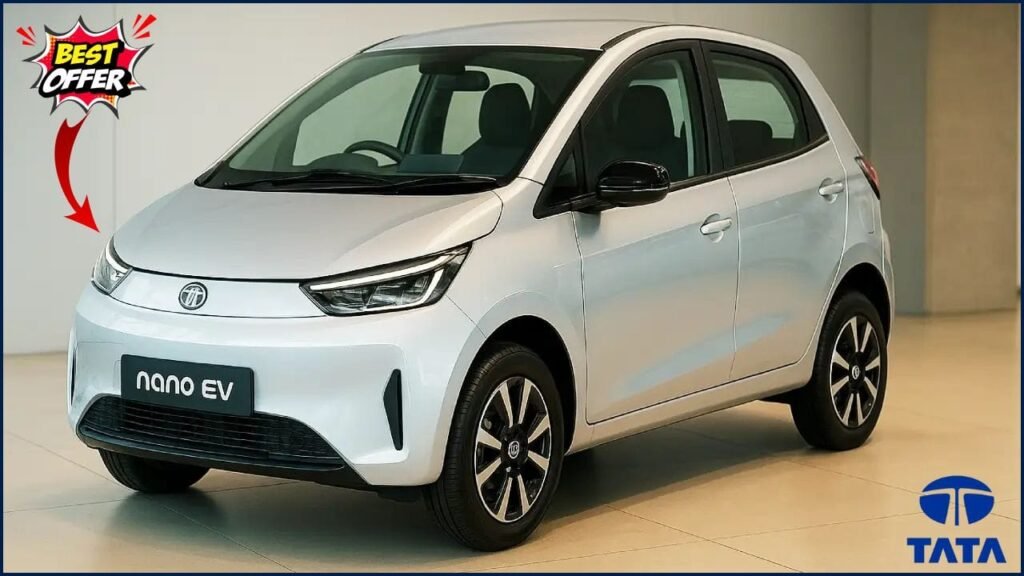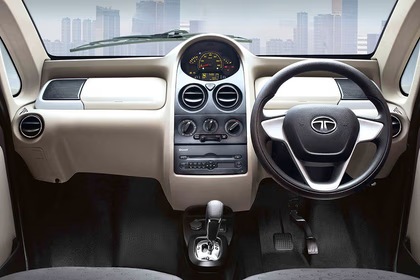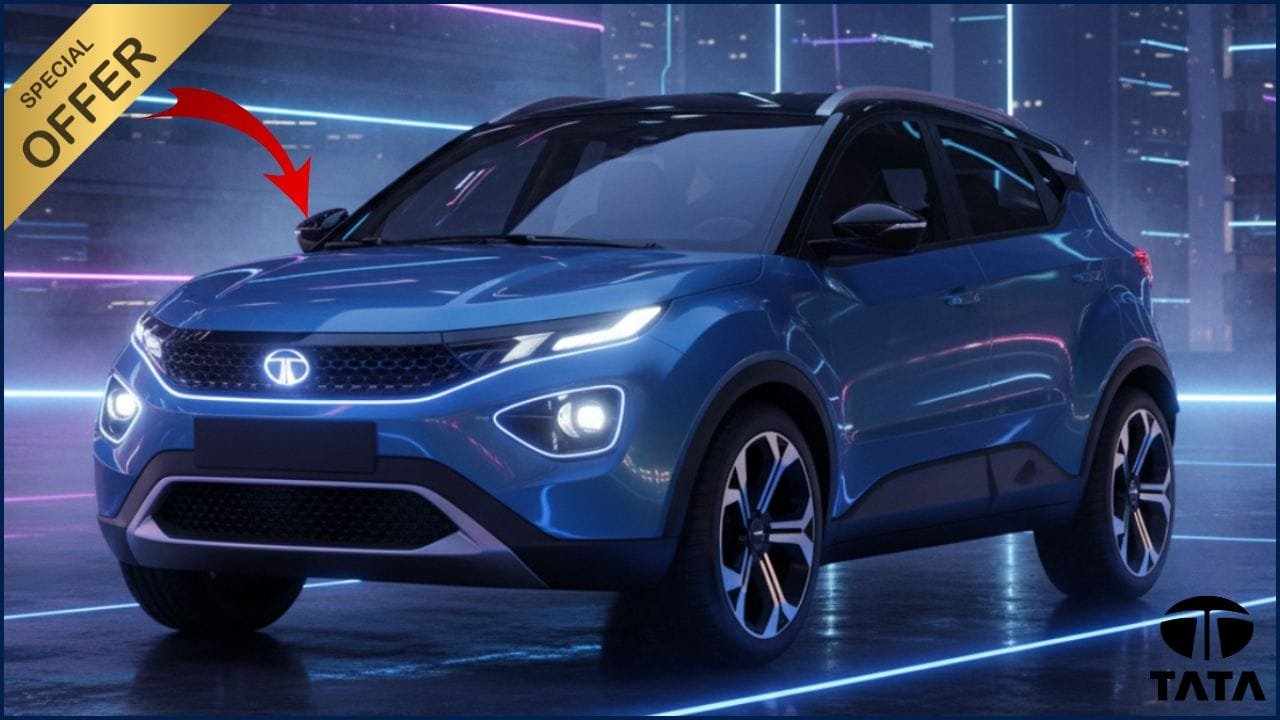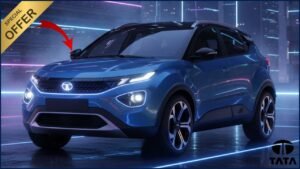
The rumoured Tata Nano EV 2026 has captured public attention across India. Viral posts suggest a relaunch of Tata’s once-iconic small car, promising an electric version with a 460 km range, 35-minute fast charging, and an EMI as low as ₹3,990 per month. Yet, Tata Motors has not confirmed these details. This report examines the facts behind the claims, places them in the broader context of India’s fast-evolving EV market, and analyses what a Nano EV could mean for affordable mobility.
The Legacy of the Nano
Introduced in 2009 as “the world’s cheapest car,” the original Tata Nano was designed to make personal transportation accessible to millions. Despite its cultural impact, sales were disappointing, and the model was discontinued by 2018.
A resurrection as an electric vehicle would represent both symbolic redemption and strategic opportunity for Tata Motors, which now leads India’s EV market through models like the Nexon EV, Tiago EV, and Tigor EV.
Tata’s Broader Electric Strategy
Tata Motors is India’s dominant EV manufacturer, holding roughly 70 percent of the domestic EV market, according to the Society of Indian Automobile Manufacturers (SIAM). The company plans to invest about ₹350 billion (US $4 billion) over five years to expand its electric portfolio, Reuters reported in June 2025.
The automaker is developing a new Gen 3 EV architecture and increasing localisation of battery production through Tata Agratas Energy Storage Solutions, its battery manufacturing arm. This strategy suggests a long-term commitment to EV scalability, though no official Nano-branded project has been disclosed.
What the Viral Claims Suggest
Unverified blog posts and social-media channels claim the Tata Nano EV 2026 will feature:
- A 460 km range on a single charge
- 35-minute fast charging capability
- Pricing structured at a ₹3,990 monthly EMI
While attractive, these claims lack substantiation. Neither Tata Motors’ official EV portal nor its recent public filings mention such specifications.

Assessing the 460 KM Range Claim
To deliver a 460 km range, a compact EV would likely need a battery pack of 40 to 45 kWh, assuming high efficiency. The current Tiago EV—a larger hatchback—offers up to 315 km (ARAI-certified) using a 24 kWh battery.
Automotive engineer Rohan Kumar notes:
“A 460 km range would require a battery larger than what’s feasible for a micro-car without raising its price or weight substantially.”
This technical challenge makes the viral specification improbable for a budget EV in the near term.
Fast-Charging Reality: 35 Minutes or Marketing Myth?
Tata EVs currently use the CCS2 DC fast-charging standard. Charging from 10 to 80 percent typically takes 57 minutes for a Tiago EV with a 25 kWh battery at a 50 kW charger. Reducing that time to 35 minutes would require new solid-state or ultra-high-C-rate batteries, which are still under testing.
Energy-policy researcher Dr. Meera Nair explains:
“India’s charging network is improving, but even premium EVs rarely achieve consistent 35-minute charging due to heat and grid limitations.”
Thus, while possible in future iterations, the technology is unlikely to arrive in an ultra-low-cost EV by 2026.
The EMI Question: Can ₹3,990 Per Month Be Realistic?
Assuming a ₹6 lakh price tag, a ₹3,990 EMI would imply a ten-year loan tenure or significant manufacturer subsidies. Even with the government’s FAME II incentives and state rebates, analysts find the figure overly optimistic.
Financial analyst Priya Menon observes:
“To reach that EMI, the on-road price must be under ₹5 lakh after incentives — a difficult target given battery costs today.”
That makes the pricing element more of a marketing hook than an established fact.
Could the Nano EV Use Existing Technology?
If a Nano EV were to appear, it would most likely use Tata’s Ziptron platform or its next-generation EV architecture. That would bring better safety and battery management but limit range to around 200–250 km — comparable to current entry-level EVs.
Analysts also suggest Tata could draw on its experience with the Tiago EV and the Punch EV to scale down components for a smaller car.
India’s EV Market in Transition
India registered over 1.5 million EV sales in 2024, up 40 percent year-on-year, according to the Ministry of Heavy Industries. Two-wheelers dominate, but demand for small cars is rising. Rivals like MG Comet EV, Citroën ë-C3, and Maruti Suzuki’s upcoming EV offerings are competing for affordable urban drivers.
If revived, a Nano-branded EV could fit this space neatly, offering city-friendly mobility with Tata’s trusted network — but only if the technical and pricing promises hold up.
Environmental and Social Impact
An affordable Nano EV could be transformative for urban India. Cities such as Delhi and Bengaluru face severe air pollution and traffic congestion. Compact EVs can reduce tailpipe emissions and energy use per capita.
Economist Arvind Kohli notes:
“Affordable EVs align with India’s net-zero 2050 trajectory and could reduce dependence on imported oil.”
However, experts warn that electricity generation must also transition to renewables to realise full climate benefits.
What to Watch Next
Tata Motors traditionally unveils new concepts at the Auto Expo, held every two years. Analysts expect any Nano EV prototype — if it exists — to appear there or at an official investor briefing before mid-2026.
Consumers should monitor:
- Official statements on battery capacity and pricing
- Independent range tests by automotive publications
- Expansion of fast-charging infrastructure by Tata Power and others
Balanced Expert Outlook
Dr. Anya Sharma of Brookings Institution summarises:
“The Nano EV idea fits Tata’s democratised mobility vision. But the technical claims circulating online should be verified through company disclosures and independent testing.”
This view echoes a broader sentiment among industry experts — optimism tempered by caution.
Tata Nexon 2025 SUV with 1.2L Turbo Petrol & 40 KMPL Mileage: Massive Year End Offer on Bookings!
Conclusion
At present, the Tata Nano EV 2026 remains a speculative project. No official confirmation supports the claims of a 460 km range or 35-minute fast charging. The figures appear inconsistent with current battery and cost trends for low-cost EVs in India.
Nevertheless, the Nano name retains powerful recognition. If revived responsibly, it could make electric mobility more accessible to the mass market — a goal aligned with India’s sustainability aspirations.
For now, consumers should await verified details from Tata Motors before believing the headlines.
















